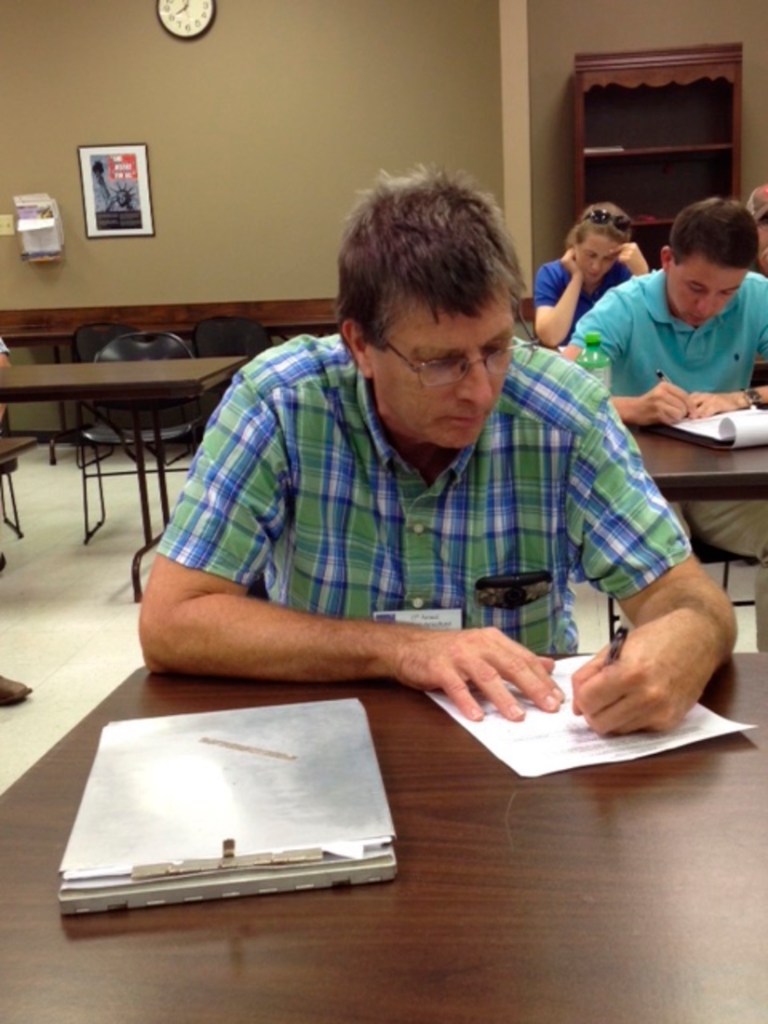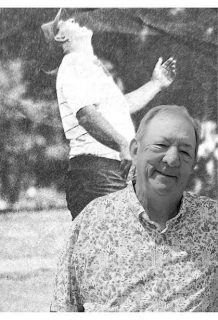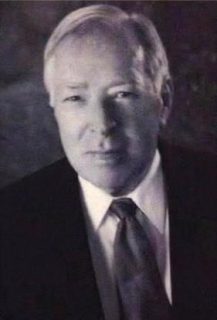State beekeeper shares plan to combat bee loss
Published 7:54 am Thursday, July 14, 2016

- Ray Tucker Jr., president of the Kentucky State Beekeepers Association provides written input on the Pollinator Protection Plan.
Honeybee populations have been declining in recent years, with a 40 percent loss of bees in some states last year, compared to a rate that hovered around 5 percent in the 1970s, State Beekeeper Tammy Horn Potter said.
“Those reasons for the losses are all over the place,” she said, before explaining that the Varroa mite, a parasite that attacks honeybees, the use of chemicals and Colony Collapse Disorder, a phenomenon where the majority of honeybees in a hive disappear, have mainly been responsible. “There are a lot of interrelated issues. You can’t really just pin it on one thing.”
Trending
Potter was speaking Wednesday to local beekeepers at the Warren County Cooperative Extension about the Kentucky Department of Agriculture’s plan to stop the populations of honeybees and other pollinators from falling.
There has been a national effort to combat the decline in honeybee populations because of their importance to agriculture, Potter said. “Of the 115 top crops in the United States, 87 are dependent upon honeybees,” she said.
The Pollinator Protection Plan’s three main goals are to reduce hive loss to 15 percent by 2019, increase pollinator habitats and increase monarch butterfly habitats, Potter said. “We wanted to be as inclusive I think as possible because we understand that there are a lot of species that are sensitive.”
Educating the public on the issue and improving communication among people and groups involved with beekeeping and practices, like spraying pesticides, potentially harmful to pollinators, were among the main goals.
Horn encouraged beekeepers to report their hives’ health to her office, which isn’t required by law but would help her keep track of the state’s bee populations.
“With our beekeepers, we really want to stress that the need to be documenting your hive health through all stages,” she said.
Trending
Other parts of the plan call for advising people to spray pesticides after 3 p.m. or before 9 a.m. rather than in the middle of the day when bees are most active. The plan also calls for working with the Kentucky Transportation Cabinet to convert former rest areas into monarch butterfly way stations.
When Potter asked those at the meeting who liked the plan to raise their hands, Thomas Young, president of the Warren County Beekeepers, made an effort to raise his hand as high as he could.
“I think it’s great,” he said. “It should have been done 10 years ago.”
He said he thinks the plan provides for better communication between beekeepers and the public, which he thinks would be the best way to combat the “misuse of chemicals,” that have resulted in declining bee populations for some of the beekeepers in his group.
Pesticides that kill bees are too easy to obtain, Young said, adding that anyone can buy them at Lowe’s or Home Depot.
“They have no business fooling with them because they have no idea how to use them,” he said. “They just point and shoot.”
John Benham, former president of Kentucky State Beekeepers Association, who has been involved in crafting the plan, said it mainly aims to increase and improve communication between beekeepers and pesticide users like farmers and golf courses.
“Communication is a central part of it,” he said. “That’s 99 percent of it.”
Many businesses have gotten better about using pesticides in ways that don’t endanger local pollinators but pesticides are still one of the biggest issues beekeepers face, Benham said.
“We know pesticides are here to stay so we’re just trying to educate people on how to use them,” he said.
The third and final forum for the plan will be Nov. 5 at Jenny Wiley State Resort Park in Prestonsburg, according to Potter.
“What we hope to do is finalize it by the end of 2016 and get it out to the extension offices in the beginning of 2017,” she said.
— Follow Daily News reporter Jackson French on Twitter @Jackson_French or visit bgdailynews.com.






